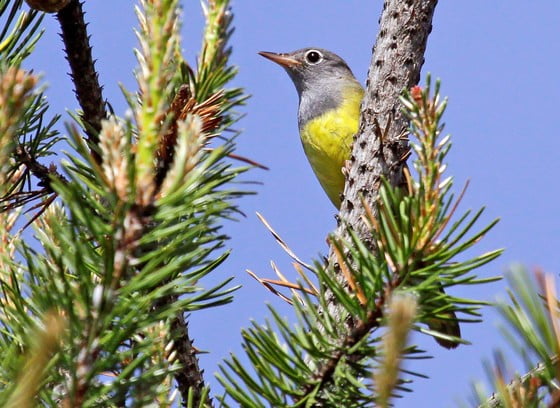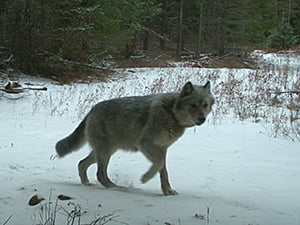
Following the pattern observed in neighboring states, the Minnesota Department of Natural Resources is reporting a substantial but expected decline in the number of bats in Minnesota. The decline is due to the effects of white-nose syndrome (WNS), a disease that is harmful and usually fatal to hibernating bats.
Recently completed DNR bat surveys have recorded bat population declines up to 94 percent in affected locations across the state, compared to counts prior to March 2015 when the DNR first confirmed the presence of the disease in Minnesota. A 90 percent decrease was observed at Soudan Underground Mine in northeastern Minnesota, where the disease was first confirmed in the state. A 94 percent decline was observed at Mystery Cave in southeastern Minnesota.
“While there may be a rare hibernaculum in Minnesota that hasn’t yet been impacted, WNS is likely to be present anywhere bats hibernate in the state,” said Ed Quinn, DNR natural resource program supervisor. Four of Minnesota’s bat species hibernate and four species migrate.
White-nose syndrome is named for the white fungal growth observed on infected bats. It is not known to pose a threat to humans, pets, livestock or other wildlife.
Although the disease is transmitted primarily from bat to bat, people can inadvertently carry fungal spores to other caves on clothing and caving gear.
For several years, public tours of Soudan Underground Mine and Mystery Cave have begun with a brief lesson on how to prevent the spread of WNS. Both before and after tours, visitors are required to walk across special mats designed to remove spores from footwear, and they are advised not to wear the same clothing, footwear or gear when visiting other caves or mines where bats may be present. Multiple washings in a standard washing machine will not provide sufficient decontamination.
As tours will continue at these and other caves, the DNR will continue to follow recommended national decontamination protocols to prevent human transport of fungal spores. The DNR urges owners of private caves to learn about WNS and take similar visitor precautions as outlined in the protocols.
DNR biologists continue to conduct winter bat counts in several Minnesota hibernacula. “We use these counts to compare the number of bats in a site from year to year. Although we count all of the bats that we see, more are likely in areas we can’t reach,” explained DNR mammalogist Gerda Nordquist.
Many species of bats feed voraciously on insects. Nordquist said the DNR has heard from residents who saw many more bats before WNS and now are noticing a dramatic increase in mosquitoes. Along with mosquitoes and other biting insects, bats also eat large numbers of moths. Some moths can damage farm crops and vegetable gardens, and bat losses to WNS could lead to increases in pesticide use.
WNS was first documented in North America in 2007 in eastern New York and has since spread to 33 states and seven Canadian provinces, killing more than six million bats.
Nordquist encourages anyone who sees a sick or dead bat to submit a Bat Observation Report. DNR staff reviews these reports and additional follow-up or testing is conducted as needed.
To learn more about white-nose syndrome and Minnesota’s bats, visit mndnr.gov/wns.

